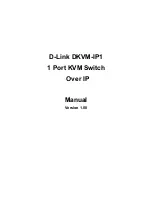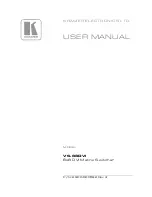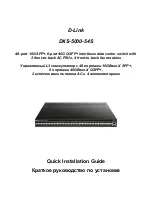
Panasonic Corporation Electromechanical Control Business Division
industrial.panasonic.com/ac/e/
Technical Terminology & Cautions for Use (Detection Switches)
Panasonic Corporation 2021
AECTB36E 202110
TECHNICAL NOTES ON MECHANICAL CHARACTERISTICS
Actuation Force and Stroke
Adequate stroke setting is the key to high reliability. It is also
important that adequate contact force be ’maintained to ensure high
reliability. For a normally closed (N.C.) circuit, the driving mechanism
should be set so that the actuator is normally in the free position.
For a normally open (N.O.) circuit, the actuator should be pressed to
70% to 100% of the specified stroke to absorb possible errors.
If the stroke is set too close to the operating point (OP), this may
cause unstable contact, and in the worst case may cause actuator
damage due to inertia of the drive mechanism. It is advisable that
the stroke be adjusted with the mounting plate or driving
mechanism.
The figure at right shows a typical example of activation
and contact forces varying with stroke.
In the vicinity of the OP and RP, the contact force is diminished,
causing chatter and contact bounce immediately before or after
reversal. For this reason, use the switch while giving
due consideration to this. This also causes the snap action switch to
be sensitive to vibration or shock.
OF
RF
PT
N.C.
On FP
On reversal
On reversal
On OTP
N.O.
Stroke
MD
OT
FP
RP
OP
TTP Stroke
Contact force
Operating force
Changes in Operating Characteristics
Exercise design care so that malfunctions will not occur if the
operating characteristics vary by as much as 20% from, rated
values.
<Example>
In the OF Max. 0.98N specification for FS snap-action switches,
the allowable Max. is 0.98 N (100%+20%) = 1.18 N
In the RF Min. 0.15 N Min. specification
the allowable Min. 0.15 N (100%–20%) = 0.12 N
Mechanical Conditions for Type Selection
Actuator type should be selected according to activation method,
activation speed, activation rate, and activation frequency.
1) An extremely slow activation speed may cause unstable contact
transfer, possibly resulting in contact failures or contact fusion.
2) An extremely high activation speed may cause damage to
contacts or contact response failure.
Driving Mechanism
Use of a driving mechanism which will cause physical impact to the
actuator should be avoided.
<Example>
Bad
Good
TECHNICAL NOTES ON ELECTRICAL CHARACTERISTICS
1) The snap-action switch is designed for AC operations. While it has
small contact gaps and no arc absorber, it may be used for low-
capacity DC operations.
Please refer to the rating of each products
2) For applications with very small switching voltage or current, choose
the low-level load type (Au contact).
Small current and voltage application range (Au contact)
500
100
50
5
2
1
4
8
12
16
20
24
10
DC voltage (VDC)
Current (mA)
3) When selecting a contact type of a snap-action switch to be used
for low-level load switching, the following should be noted.
Silver contacts’ surfaces are prone to be oxidized and form a sulfide
film. The switch operates with no problems at thebeginning of use.
However, as the contact surfaces develop films with time, the film
may not be broken by the switching operation, causing a conduction
failure. Therefore, please choose the Au contact type for switching a
load of 0.1 A or below.
4) Application to Electronic Circuits
• The snap-action switch contacts can sustain bounce or chatter
when closed. Bounce or chatter can cause noise or pulse count
errors when the snap action switch is used in electronic circuits.
• If contact bounce or chatter poses problems in the vicinity of the
OP and RP, use a suitable absorption network, such as a C/ R
network.
5) Check the surge current, normal current and surge duration.
6) Contact resistance given in performance specifications is measured
with a voltage drop method using 6 to 8 V DC, 1 A (except for
low-level load type). Contact resistance across COM and N.C.
terminals is measured in the free position, while contact resistance
across COM and N.O. terminals is measured in the total travel
position.
7) To prevent contact welding failure, be sure to use a serial resistance
for each capacitive load.
8) If snap-action switch operation is synchronized with the AC supply
phase, this may cause: shortened electrical life, contact fusion
failure, contact transfer, or other reliability problems.
ー 9 ー
































